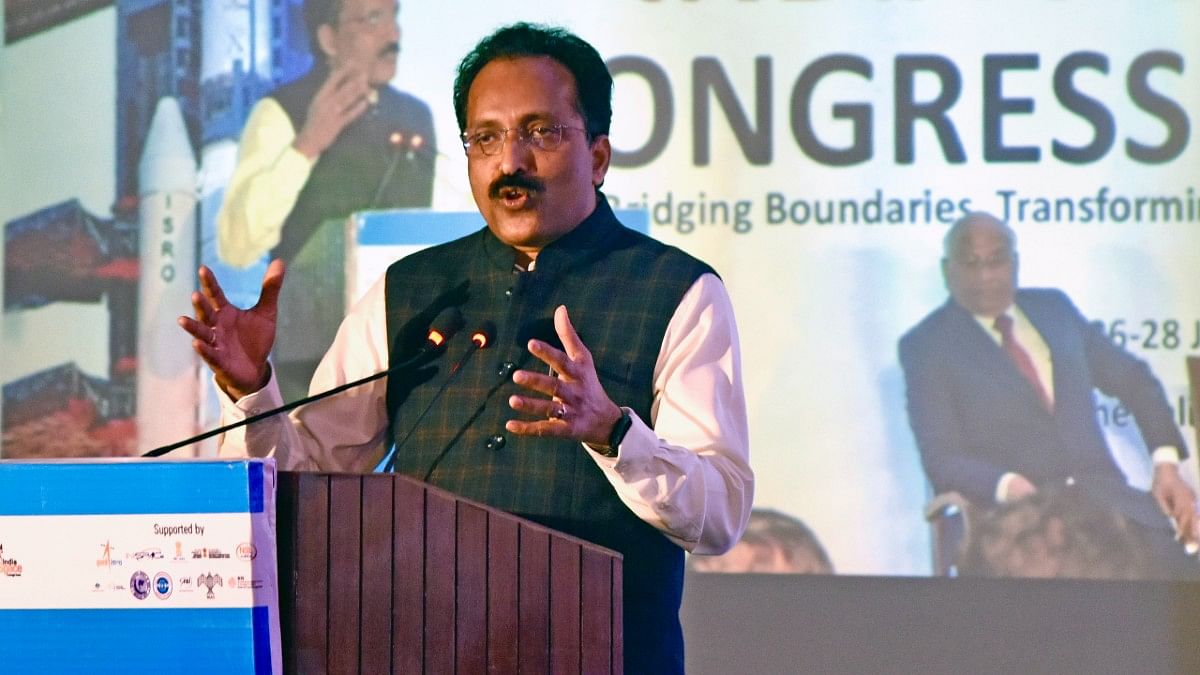New Delhi: The Indian Space Research Organisation (ISRO) is ready with the fourth and the fifth editions of the Chandrayaan mission. It is in the process of seeking government approvals, ISRO chairman S. Somanath told ThePrint in an interview Tuesday.
On 23 August last year, India became the first country in the world to land a module near the south pole of the Moon.
ISRO’s Chandrayaan-3 team has been selected for the first ‘Vigyan Team’ award.
Somanath spoke to ThePrint about India’s focus on future lunar missions and other upcoming big-ticket missions. The following are some edited excerpts.
Also read: Mars may have oceans’ worth of water underground, but this doesn’t mean it’s ready to be colonised
Q: After Chandrayaan-3, what future lunar missions are in the pipeline for India in the coming years?
Lunar missions will be ISRO’s focus for the next few years. Chandrayaan-3 was successfully completed, and we are now working on Chandrayaan-4 and Chandrayaan-5. The designs for these have been completed, and we are seeking approval from the government.
We are also building the Bharatiya Antariksha Station, which will be India’s very own space station. This station will have five modules. The launch of the first module is scheduled for 2028. The design has been completed, and the report has been submitted to the government for approval.
Meanwhile, we are also preparing to send the first Indian to the Moon. This, of course, will take time. The deadline set for us by the prime minister is 2040.
We are currently working on capability development in terms of technology. The process will be initiated in a few years, but we have started investing and doing the background work.
Q: Another significant mission that ISRO is working on is the Gaganyaan mission, which will be India’s first human spaceflight. What is the status of the unmanned test before the final flight?
Gaganyaan’s unmanned mission is scheduled for December. All stages of the rocket have already reached Sriharikota. Last week, we dispatched the final stage — the C-32 cryogenic stage. Now, the crew module needs to reach SHAR (Sriharikota High Altitude Range).
It is undergoing integration at the Vikram Sarabhai Space Centre (VSSC) in Trivandrum.
The service module is undergoing integration at the UR Rao Satellite Centre, and the crew escape systems are also being transported to SHAR in batches. In another month or so, we can expect all parts to reach. After the final integration and round of tests, we are hoping to launch in December.
Q: Two of the ‘Gaganyatris’ have been chosen for the Axiom-4 mission to travel to the International Space Station (ISS). What training are they undergoing, and when can this launch be expected?
They have reached the US and have started their initial training. That will last for another three months. After that, they will have to undergo training in other facilities in Europe and in alternate facilities in the US. They will then come back to India. One of them will finally be going to the ISS. The launch is likely by mid-2025.
Q: The third developmental flight for SSLV was successfully conducted a few days ago. It is due to be commercialised now. How will it be taken forward?
This is the first time we will have technology transfer of a rocket through a consortium (an association of several companies) company. An RFI (request for information) was floated, where over ten companies showed interest.
We had several rounds of sessions with these companies, where all their questions were answered. Then, a final choice submission was made. Some companies have been selected to receive the RFP (request for proposal). This has required them to make a certain payment. Companies have already done that, and the RFP document containing the technical details of the work has been given to them.
The company that bids the highest will be awarded the contract. They will be working with us for two years. Technology transfer cannot happen merely by a document transfer. They have to work along with us and understand how we build it.
(Edited by Radifah Kabir)
Also read: Earth nearing ‘tipping point’, pseudoscience ‘dangerous’ — experts at Delhi’s India March for Science

